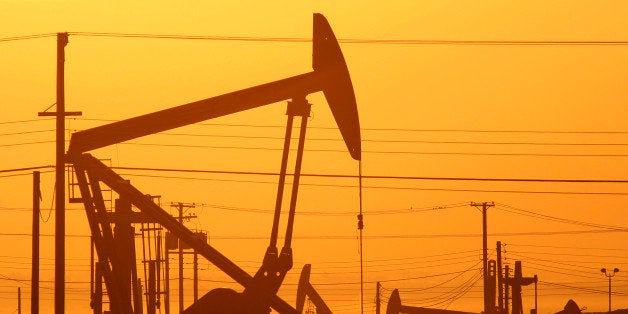
Co-authored by Helen Slottje and Andy Hsia-Coron
Great movements -- from women's suffrage to civil rights -- begin with a small group of people standing up and saying no to injustice. Such a movement is currently emerging around our most basic human rights: access to clean air, clean water, and a stable climate.
This new movement aims to halt aggressive oil and gas extraction techniques like fracking, which destroy water, pollute air, and leak climate-killing methane into the atmosphere. It's a grassroots effort that is spreading on both coasts of our great nation, and its momentum is growing as communities learn from the success of their neighbors and far-flung allies.
Not long ago, the discovery of the natural gas-rich Marcellus Shale in the northeast prompted a rush from industry officials looking to secure gas leases in rural communities throughout New York, Pennsylvania and elsewhere. Residents in small towns and villages were told that there was nothing they could do -- as long as there were willing property owners, wells would be "fracked" through the hard shale rock under their properties and natural gas would be extracted.
New Yorkers quickly became alarmed about how fracking might change everything from the rural character of their communities to the safety of their water supplies. Rather than surrender to industry's insistence that fracking is an inevitability, neighbors banded together and successfully used the law to keep fracking out of their communities. This fight became even more urgent after Hurricane Sandy sent a tide of seawater into the New York City subway in 2012, and the consequences of climate change hit home.
Similarly, here in California the discovery of oil inside of various shale formations has prompted a flurry of activity from energy companies looking to tap into this fossil fuel oil reserve.
Residents in communities where extreme well stimulation techniques like fracking are used are rightfully concerned about air pollution and the contamination of their water supplies in a time of ruinous drought. They also wonder why we are fracking in a time of climate emergency -- especially when the latest study from Stanford University confirms what many suspect: climate change is the driver of California's historic drought.
California communities are learning from the success in New York and are taking charge of their local water supplies and public health. They are banding together to encourage local elected officials to regulate land uses related to well stimulation and taking the issue directly to voters through the initiative process. Communities standing up to the oil industry include picturesque coastal areas like Santa Barbara and Mendocino counties and rural regions like San Benito and Butte counties.
Everywhere citizen opponents to these techniques have organized, the oil industry has launched misinformation campaigns to confuse and mislead voters. Public records show that the industry has collected at least $3 million to oppose efforts to curtail well stimulation in communities around California.
As local governments passed bans and moratoria on fracking throughout New York, the industry threatened lawsuit after lawsuit. But of 200 ordinances passed to limit or ban fracking in the state, only four ended up in court. And New York's highest court recently affirmed the right of communities to limit oil and gas development techniques like fracking locally.
In many states -- including New York and California -- the oil and gas industry is regulated at the state level. But cities and counties retain the right to set zoning restrictions on land use. Despite the industry's bluster, communities have as much right in California as in New York to stop fracking and other forms of oil and gas development.
Whether a community wants to protect groundwater from fracking-related pollution, air quality (and the climate) from emissions of methane associated with these practices, or public health from toxic chemicals used to drill, frack, and produce oil from deep reserves, the solution is the same: Stop fracking before it starts.
The oil industry may feel entitled to its potential profits, and will likely fight efforts to curb extreme well stimulation and enhancement anywhere they appear. But the people of California and New York -- indeed of all of states -- are even more entitled to clean air and clean water.
2014 Goldman Prize recipient Helen Slottje is an attorney who led the legal effort in New York State to leverage land use law to pass local bans and moratoria on fracking. Sandra Steingraber, PhD, is a biologist and science advisor for Americans Against Fracking. Andy Hsia-Coron is a founding member of the Coalition to Protect San Benito, which is leading an initiative effort to ban fracking in that county.